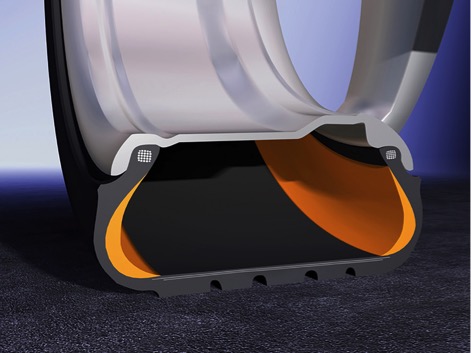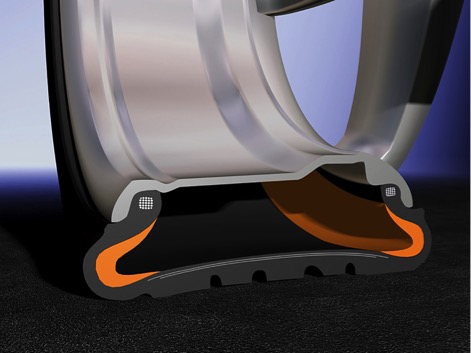Guide to spotting the signs of a slow puncture
27th August 2019

A slow puncture can happen to any of us at any time, and although in the back of our minds we think that our car will tell us when this kind of thing happens, this is very likely one of those scenarios that your car will not be able to detect. Yes, it’s true that new cars these days are fitted with TPMS (tyre pressure monitoring systems) and that will detect a drop in tyre pressure but it won’t be able to tell you exactly what caused it.
So without a technology to update you, how can you tell if your tyre has a slow puncture? The signs are not always that easy to identify, but there are some key things to look out for which – if ignored – can do serious damage, or worse, cause an accident. Fear not. In our tyre safety FAQ’s below, we’ve got your questions covered.
What is a slow puncture?
In a nutshell, it’s your tyre imperceptibly losing air. As a result, the pressure drops, and the tyre can’t perform as intended to. This means you may start to notice a reduction in drive comfort, such as the road feeling bumpier – especially over those irritating potholes. You may also detect a change in steering response and road handling, and you’ll certainly notice a reduction in the performance of your brakes. Eventually, a slow puncture will leave you at risk of complete tyre failure, and that can have dire consequences.
If my car pulls to one side of the road, is this a sign of a possible slow puncture?
Absolutely, and you can detect this quite easily. On a normal day, the chances are you’ll be driving on a road that is relatively flat for your usual journey. If you were to relax your grip of the steering wheel, and instantly feel the car beginning to pull to the left or right of the road, experience suggests that the tyre pressure is low in one or more of your tyres, possibly due to a slow puncture. If the air pressure is as it should be and the pull persists, it’s advised to check the wheel alignment or tracking. An expert at your local Merityre branch can assist you with this. Click here to find your local Merityre specialist.
What if my steering wheel starts to vibrate when I’m driving at speed?
This is a very serious sign of having a slow puncture. As previously mentioned, a tyre loses air when it has a slow puncture, and as a result is likely to result in both the tyre and wheel becoming unbalanced. This will set off a vibration, something which will be more noticeable when driving at a high speed. If this happens to you, it’s best to check your tyre pressure.
If my steering feels unresponsive and suspension feels harder, is this another sign of a slow puncture?
It definitely can be. You may notice that the steering wheel seems a bit less responsive than usual, and most drivers are sensitive to changes with their vehicle. So, if you detect this one, check your tyre pressures. Likewise, if your vehicle’s suspension isn’t as forgiving as normal, you’ll probably notice this, particularly on your usual driving routes. If the ride feels rougher than normal, it’s likely that one or more of the tyres is underinflated, possibly due to a slow puncture.
What actually causes a slow puncture?
There are several reasons for a slow puncture, including:
- a nail or screw that may have pierced the tyre;
- after driving over a pothole, the tyre may have suffered a severe impact
- the tyre valve is faulty (a fairly common one)
How can I avoid a slow puncture?
Unfortunately, incurring one of these can’t be helped, but you can do something to minimise the consequences of a slow puncture. How? By regularly checking your tyres, which tyre safety experts, including Merityre and Continental recommend you do at least once a month. It’s relatively easy to inspect your tyres for damage which could be responsible for a slow puncture. Same goes for checking your tyre pressures, and topping them up as necessary. This can be done at your local petrol station’ usually for free at your local petrol station, so the next time you’re filling up, spend an extra few minutes on checking your tyre pressures, too.
Are there any tyres that prevent punctures?
Sadly, no. However, there are tyres available with technologies that can be a life-saver if you are faced with a slow puncture. Leading premium tyre manufacturer, Continental, have two impressive products, including their ContiSeal™ tyres which have a unique technology designed to seal a puncture hole that’s up to 5 mm in diameter. This is suitable for punctures caused by a nail or screw piercing the tyre. ContiSeal™ tyres work by sealing the hole instantly thanks to a special resin inside the tyre. This means you can continue on with your journey, without the need for an immediate roadside stop to change the tyre.

and

The second Continental technology that can deal with the threat of a slow puncture is their range of SSR Run Flat tyres. These are based on self-supporting reinforced sidewalls that prevent the tyre from being crushed between the rim and the road, and slipping off the rim. With SSR, you’ll be able to continue on your journey, at a speed of up to 50 mph. With SSR tyres, there’s also the bonus of not having to carry a spare around with you!

and
Tyre sidewall with Continental Self-Supporting Run Flat technology…

…and without.